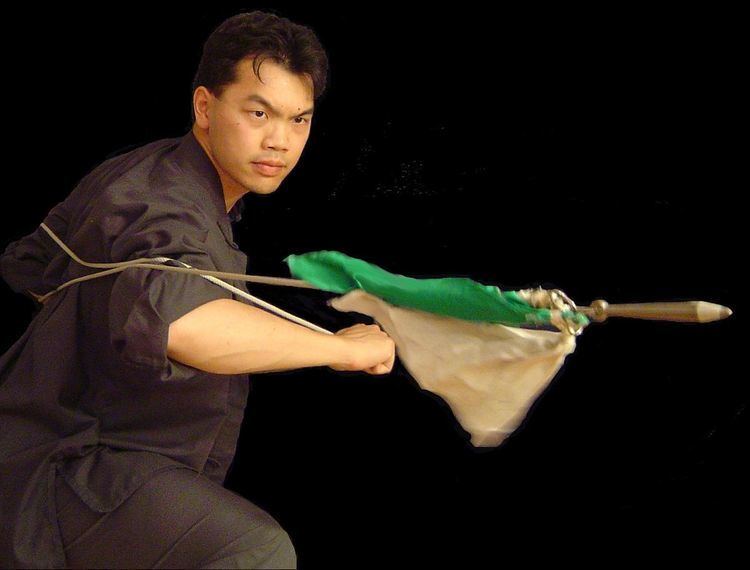 | ||
The rope dart or rope javelin (simplified Chinese: 绳镖; traditional Chinese: 繩鏢; pinyin: shéng biāo), also known as Jōhyō in Japanese, is one of the flexible weapons in Chinese martial arts. Other weapons in this family include the meteor hammer, flying claws, Fei Tou flying weight, and chain whip. Although the flexible weapons share similar movements, each weapon has its own specific techniques.
Contents
The rope dart is a long rope (usually 3–5 metres or 10–16 feet) with a metal dart attached to one end. This was a weapon from ancient times, which allows the user to throw the dart out at a long-range target and use the rope to pull it back. The rope dart can be used for twining, binding, circling, hitting, piercing, tightening, slashing and other techniques.
Rope dart play consists of twining, shooting, and retrieval. Twining and shooting can be done from any joint such as foot, knee, elbow, and neck. The rope is anchored on one hand and played primarily with the other hand.
Skillful use of the rope dart can easily trick an opponent because the dart can shoot out very suddenly, from a person beyond immediate reach.
Just like the chain whip, excellent hand-eye coordination is a must for the practitioner to use this weapon well. In some Wushu training regimens, the chain whip and Changquan are prerequisites for learning the rope dart.
A variation of this weapon is the meteor hammer, which has a blunt weight on the end of the rope. It was used in a similar fashion to the rope dart, and many of the techniques are the same. The blunt shape of the meteor ball will deal concussive damage rather than piercing.
History
The first written description of the rope dart is dated from the Tang Dynasty (618–907 AD).
Construction
The rope dart is constructed from 4 to 5 parts:
The dart is made of a hard material, usually iron or steel. It can be of variable weight depending on the users preference, and can be variable in shape (conical, triangular prism, pentagonal prism).
The rings (usually 4 or 5) are attached to the dart head.
The rope is attached to the final ring. Traditionally, the rope was constructed from Chinese rope and covered with wax to minimize friction. In modern times, the rope is often made of a softer synthetic material and covered with talc powder or some other substance to reduce friction.
There is at least one flag attached near, or onto the dart head itself to conceal the dart during play and to add control. Additional flags can be attached to the side rings to slow down the dart and increase control.
The handle is made from the last piece of rope as a slipknot to attach to the anchor hand's wrist.
Rope dart as an art form
While relatively new, rope dart is becoming increasingly popular in being used in the object manipulation scene due to its impressive performances. Because of this, there have been modifications to the original design. Some rope darts have been created to be set alight. A section of fireproof chain between the dart or meteor head and the rope attaches it securely and Kevlar wicks form the flammable head. Other rope darts have heads filled with LED lights. Both of these can be performed in the dark, adding excitement and mystery.
